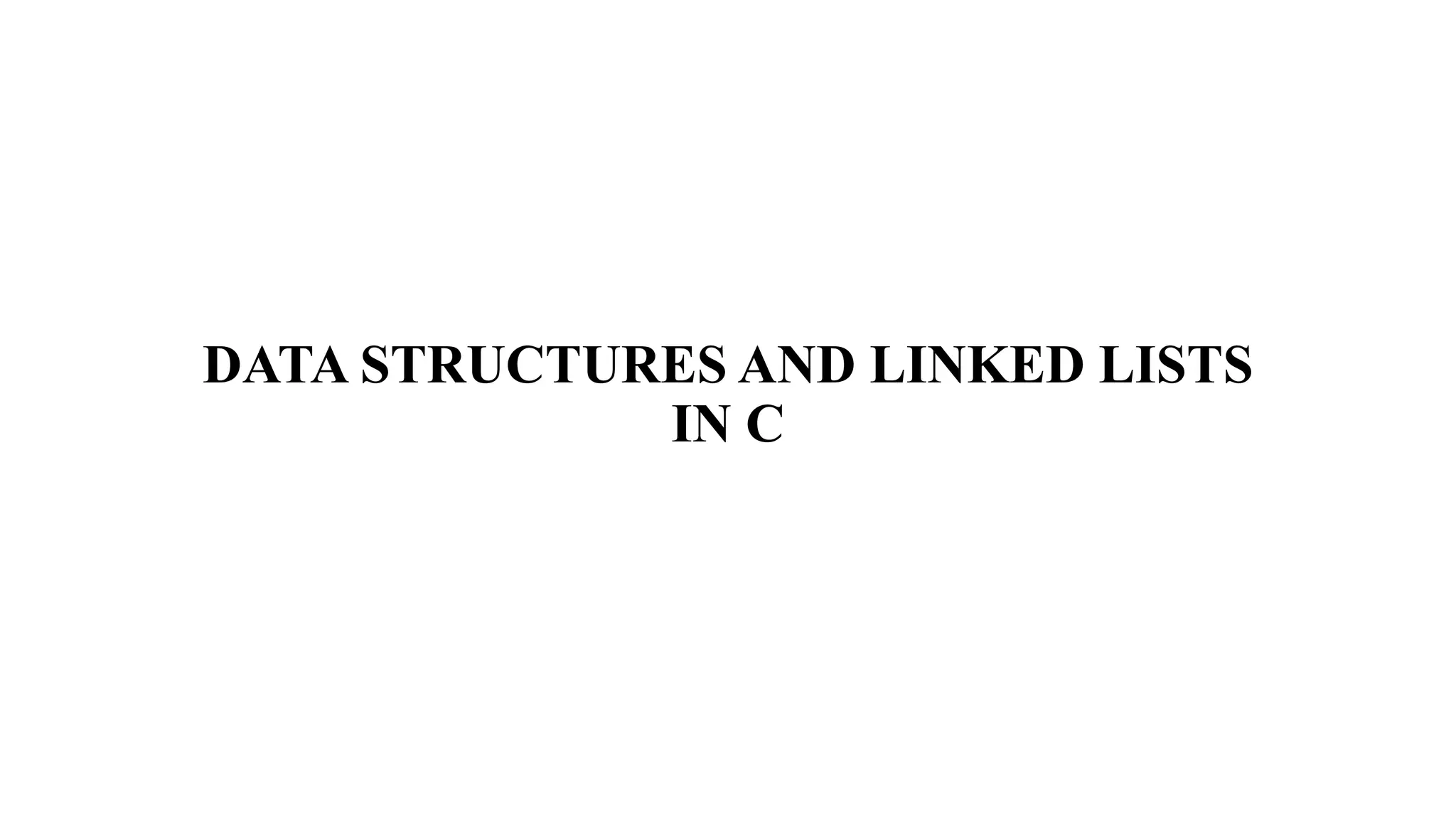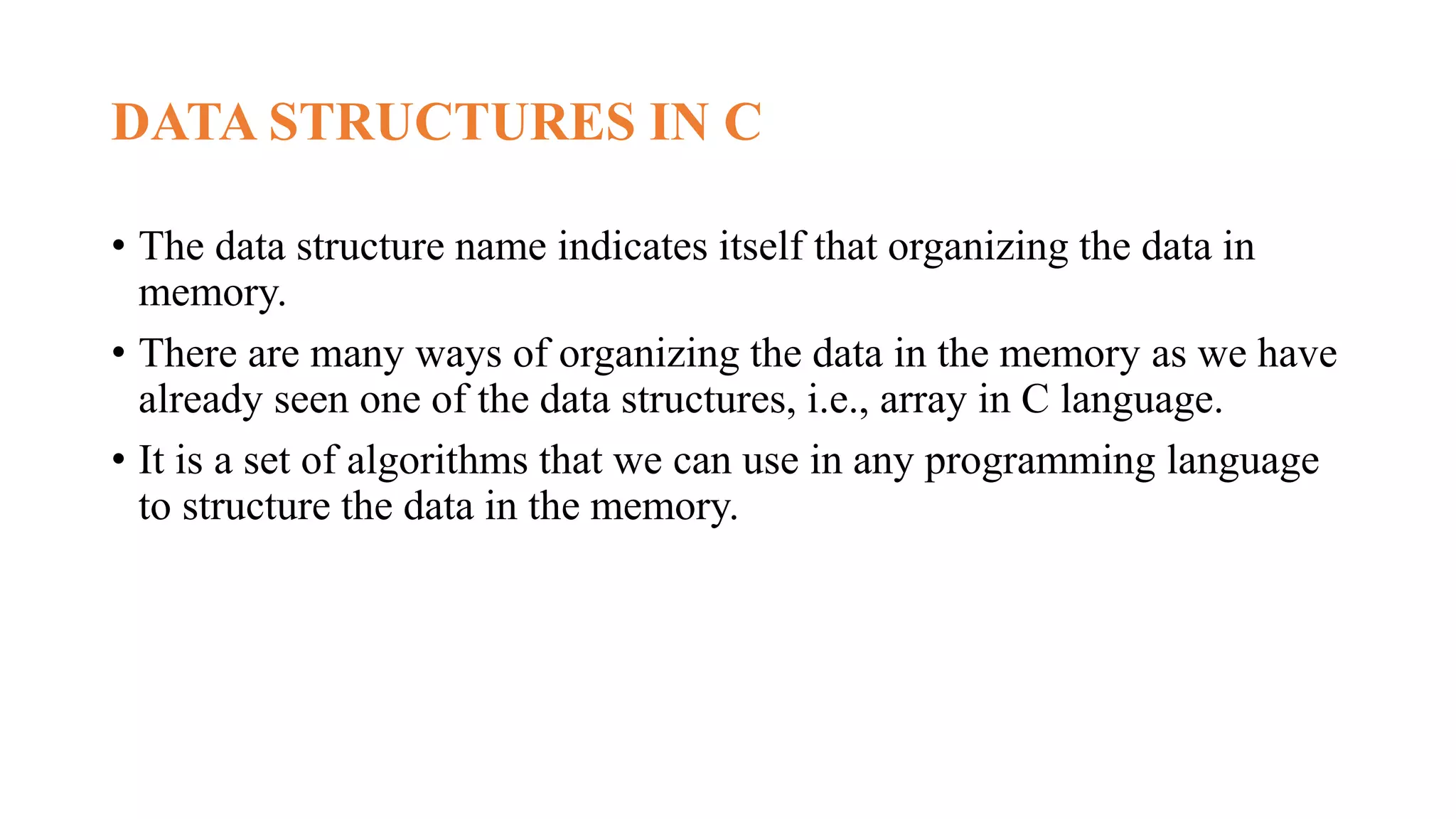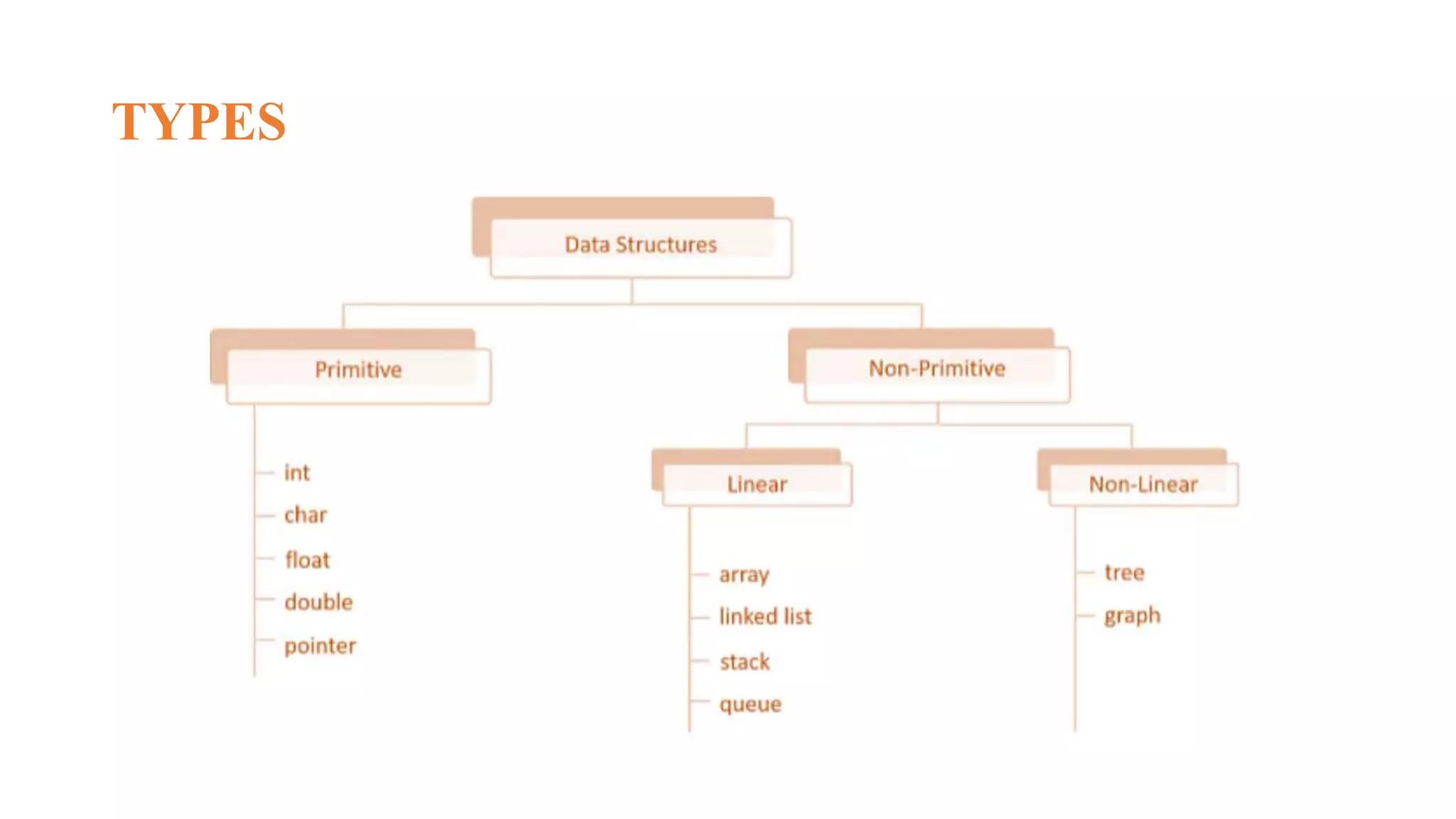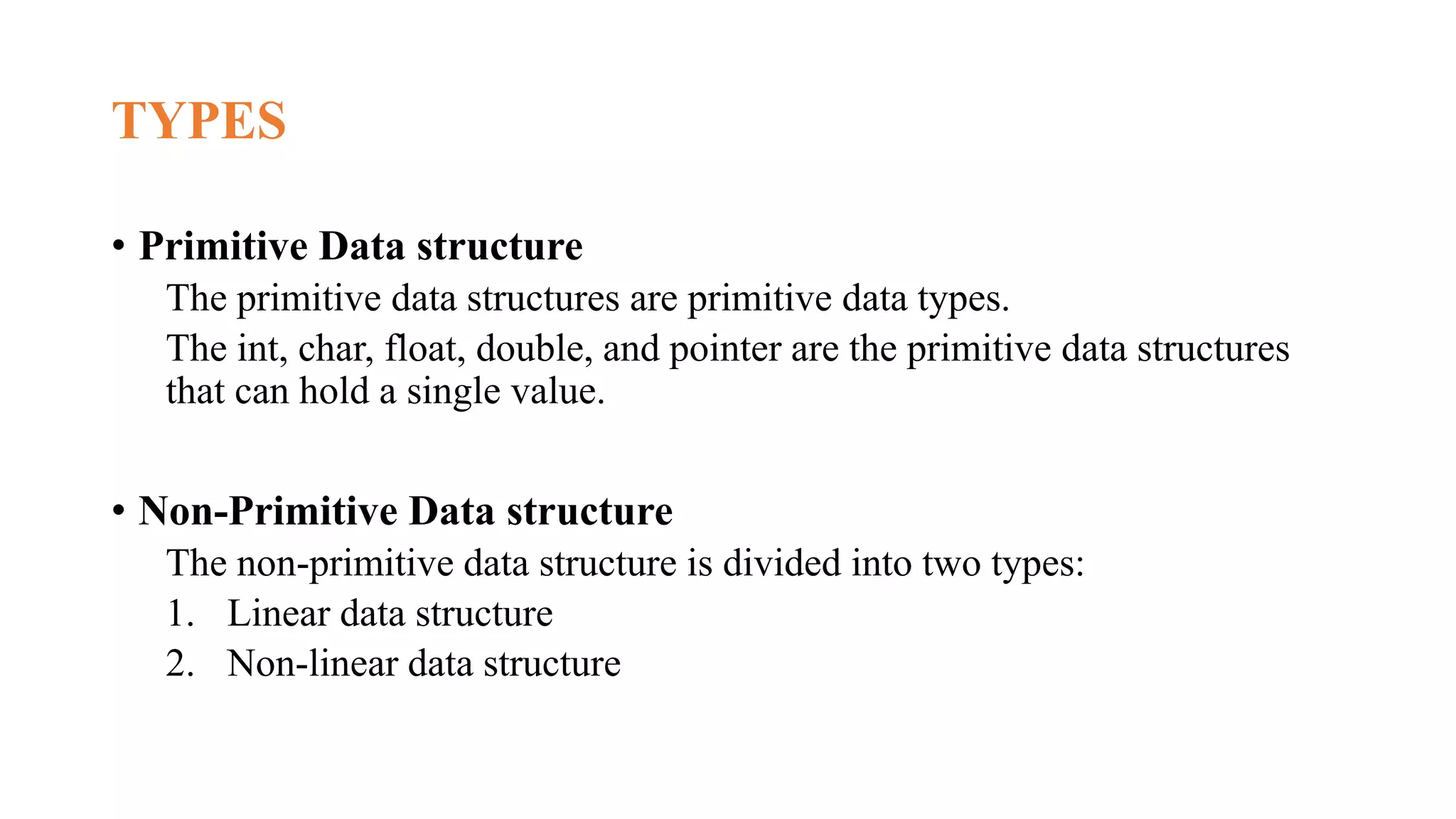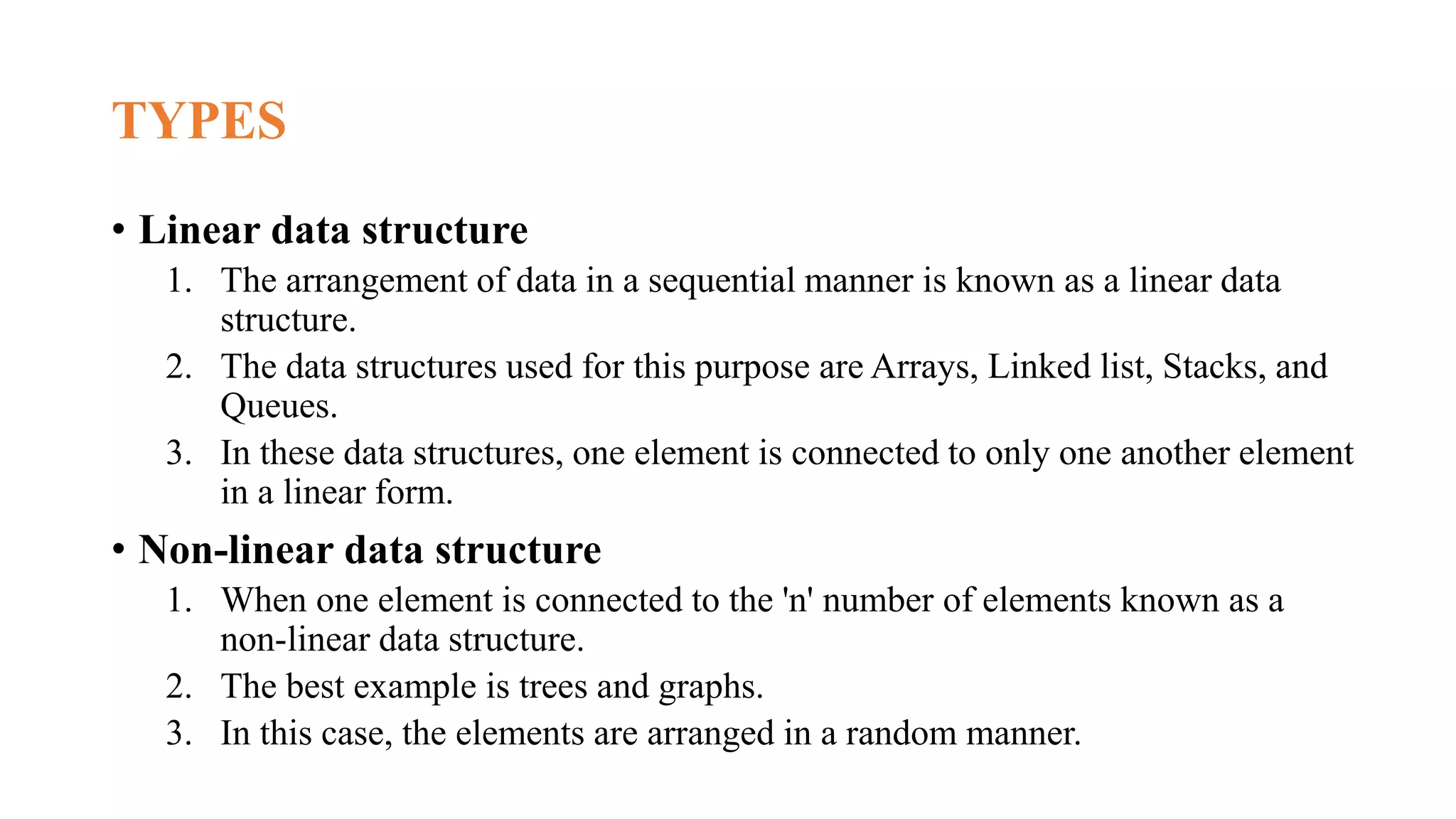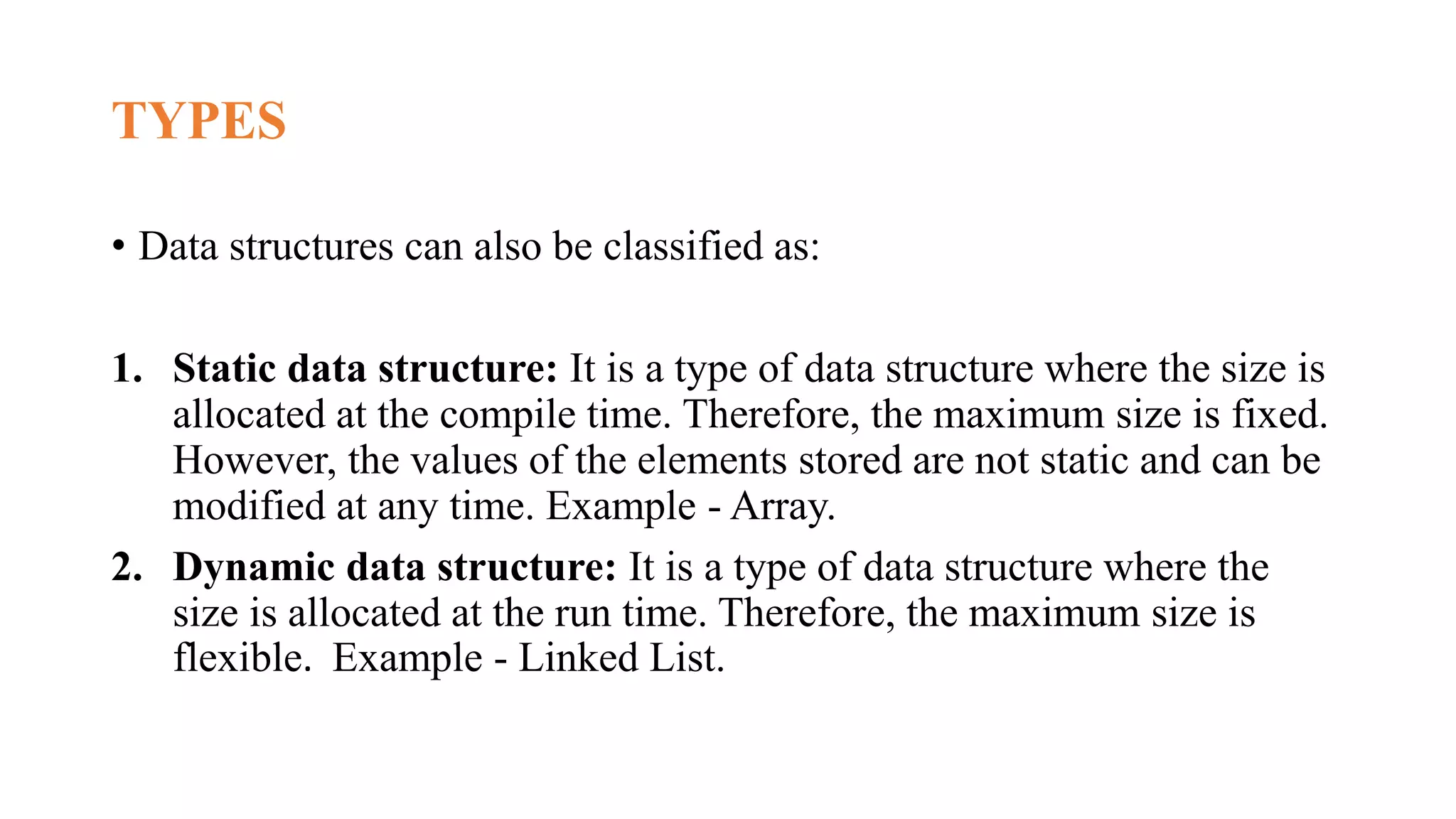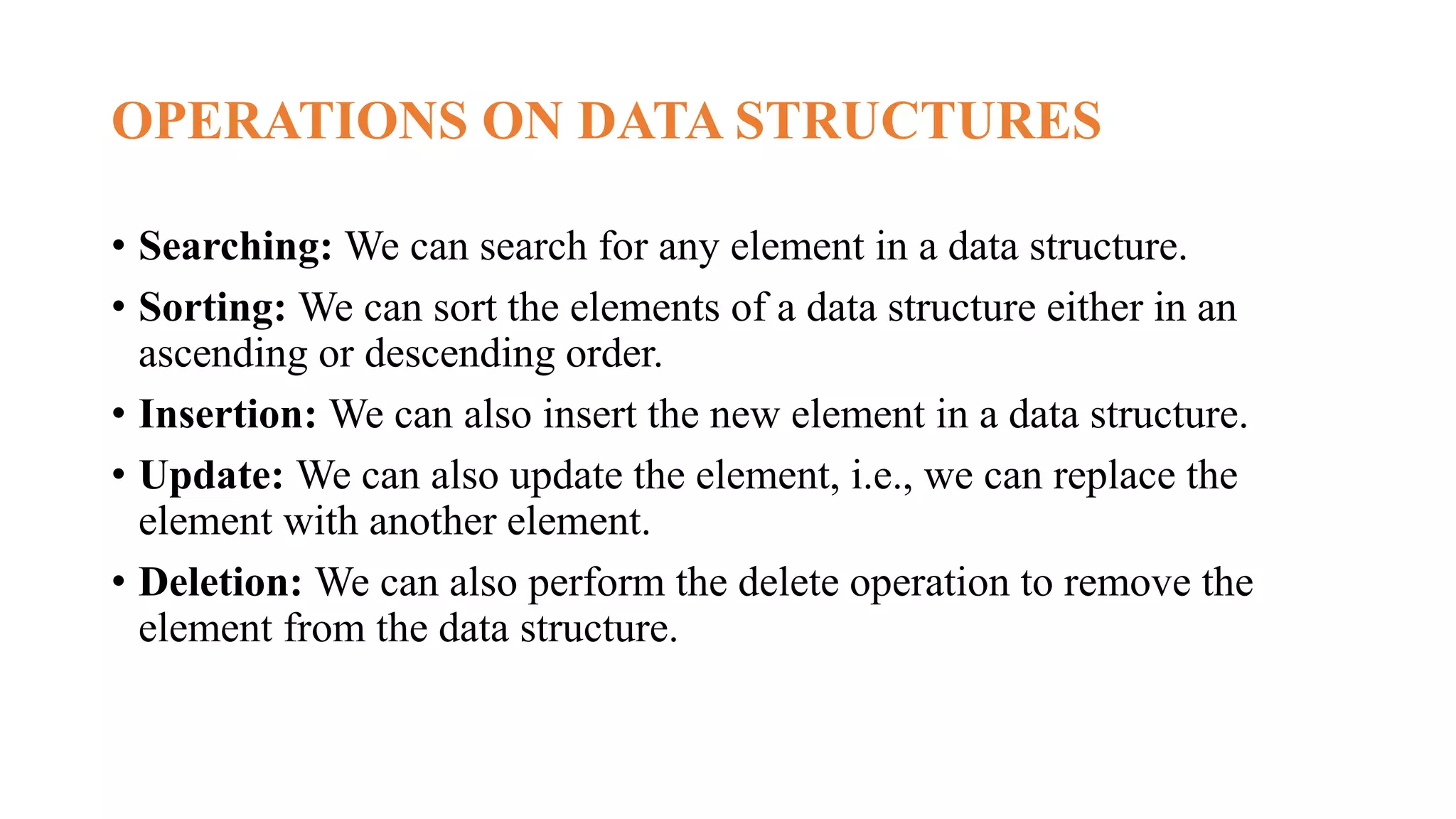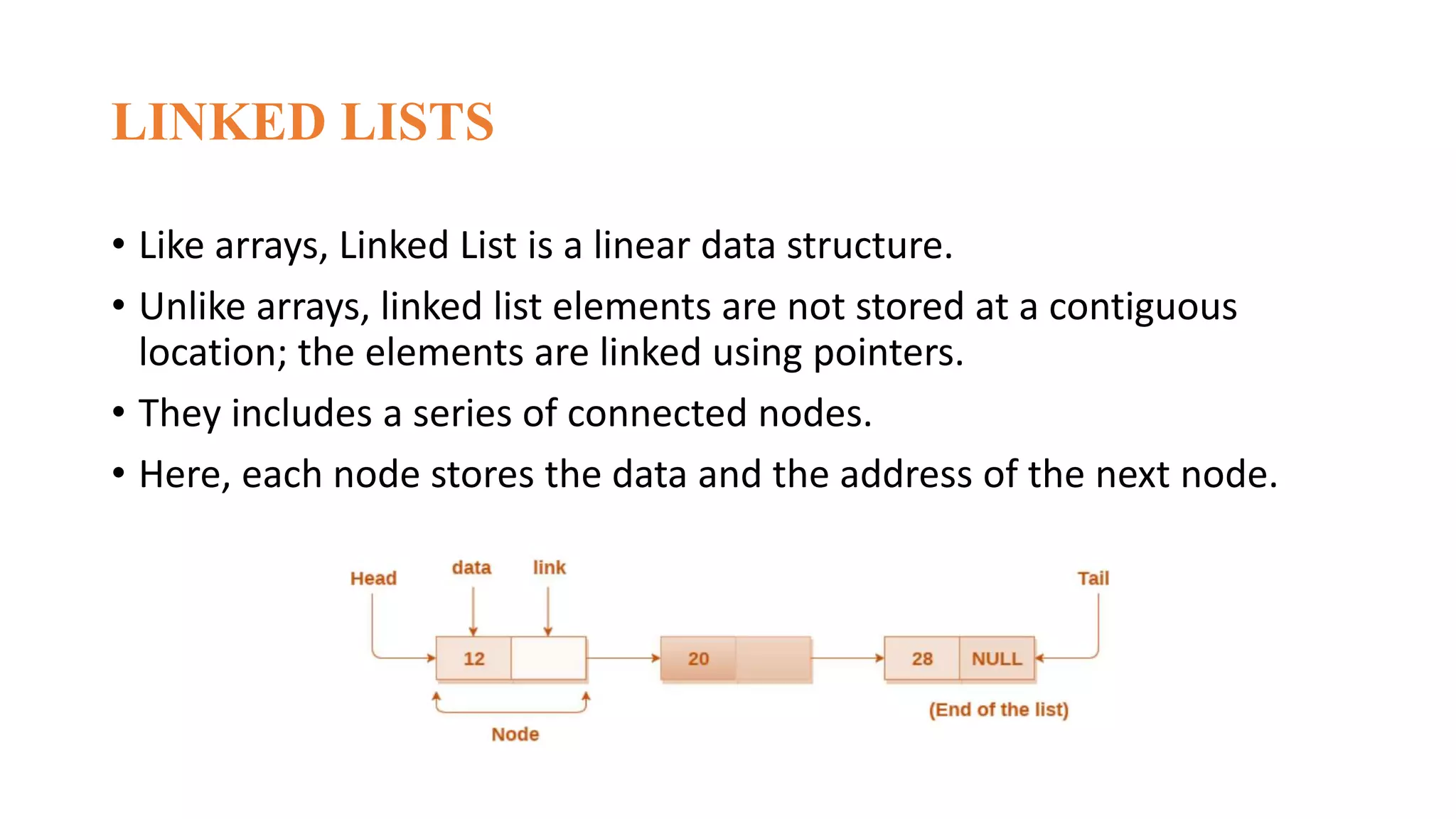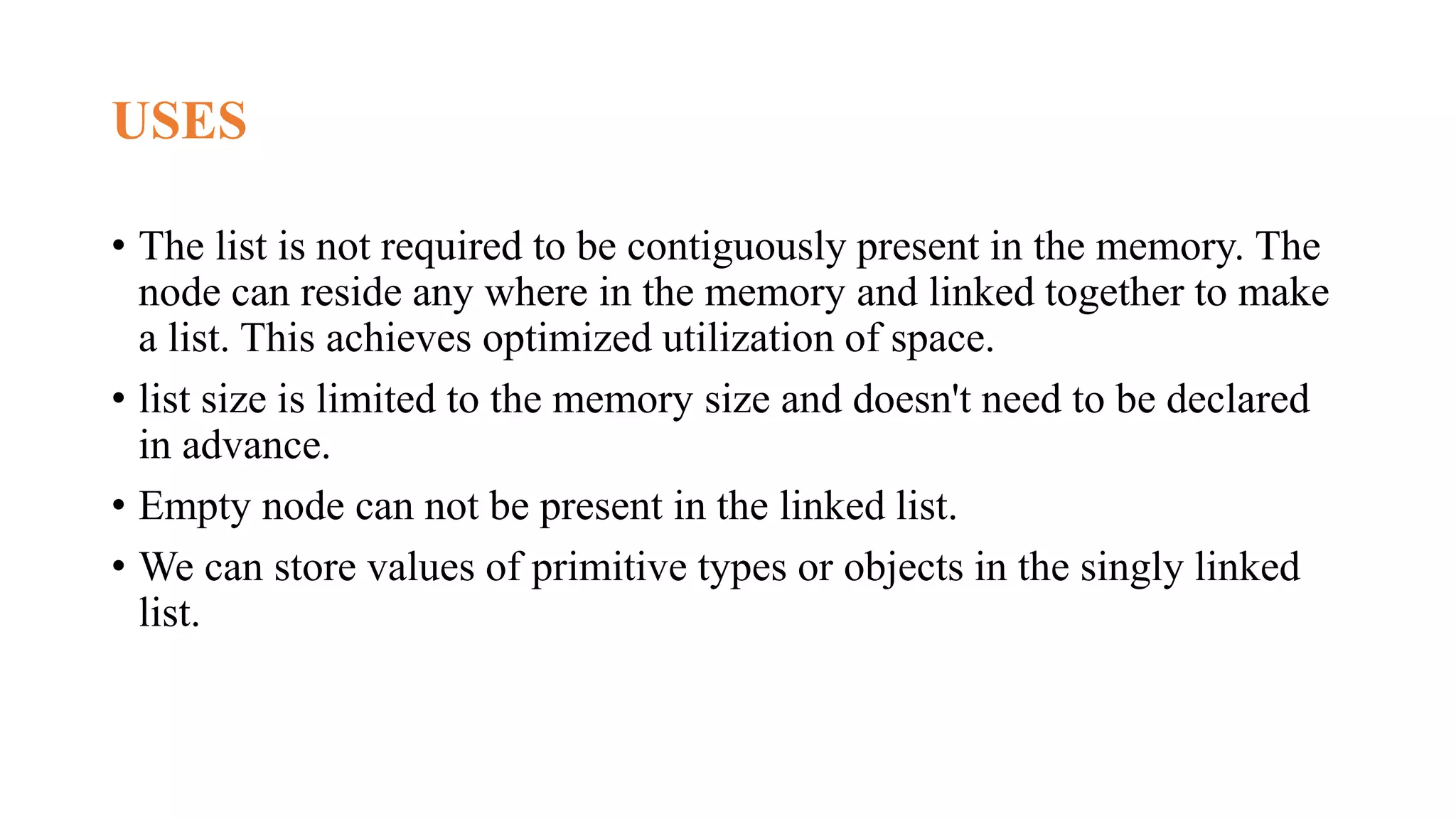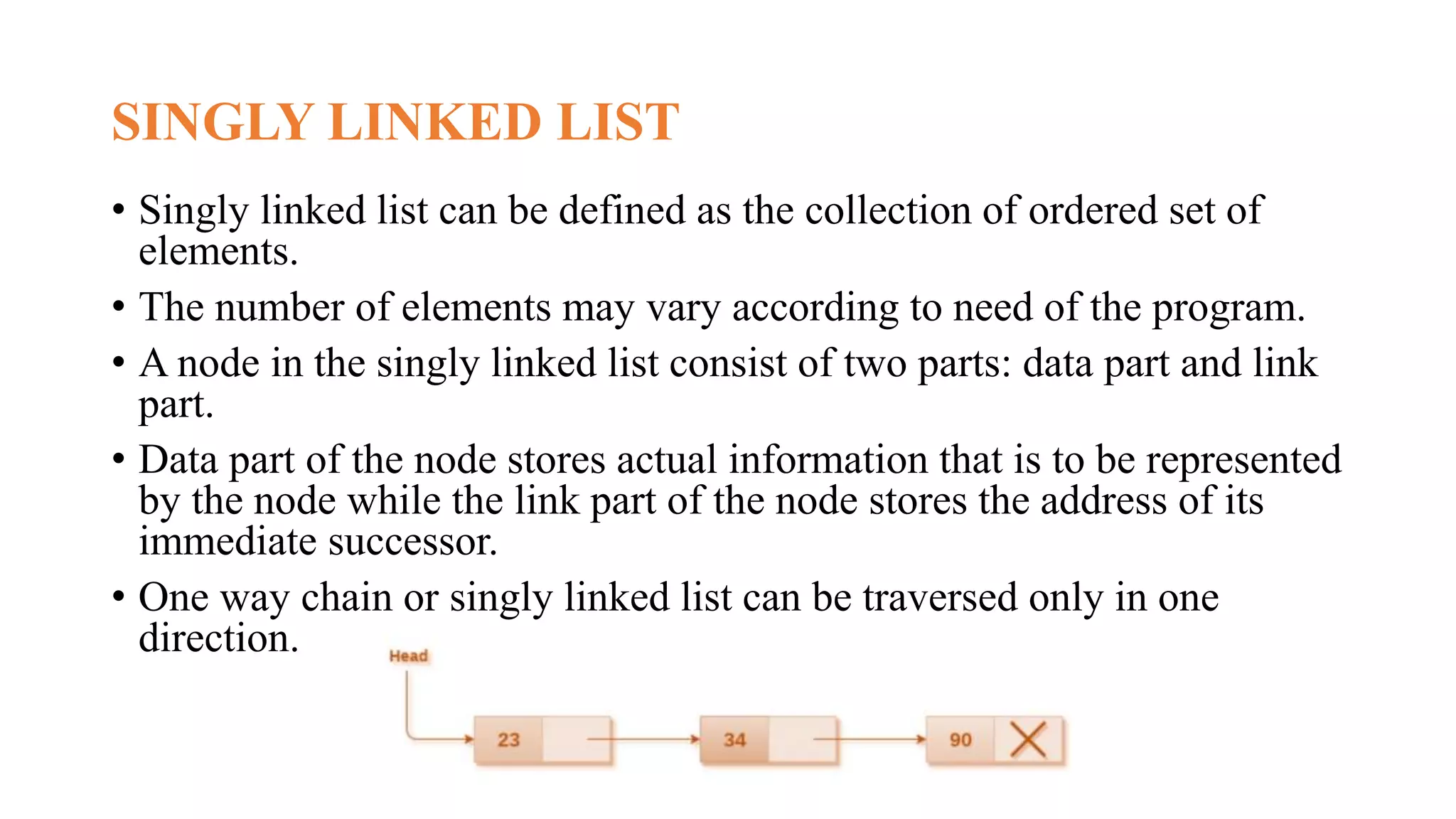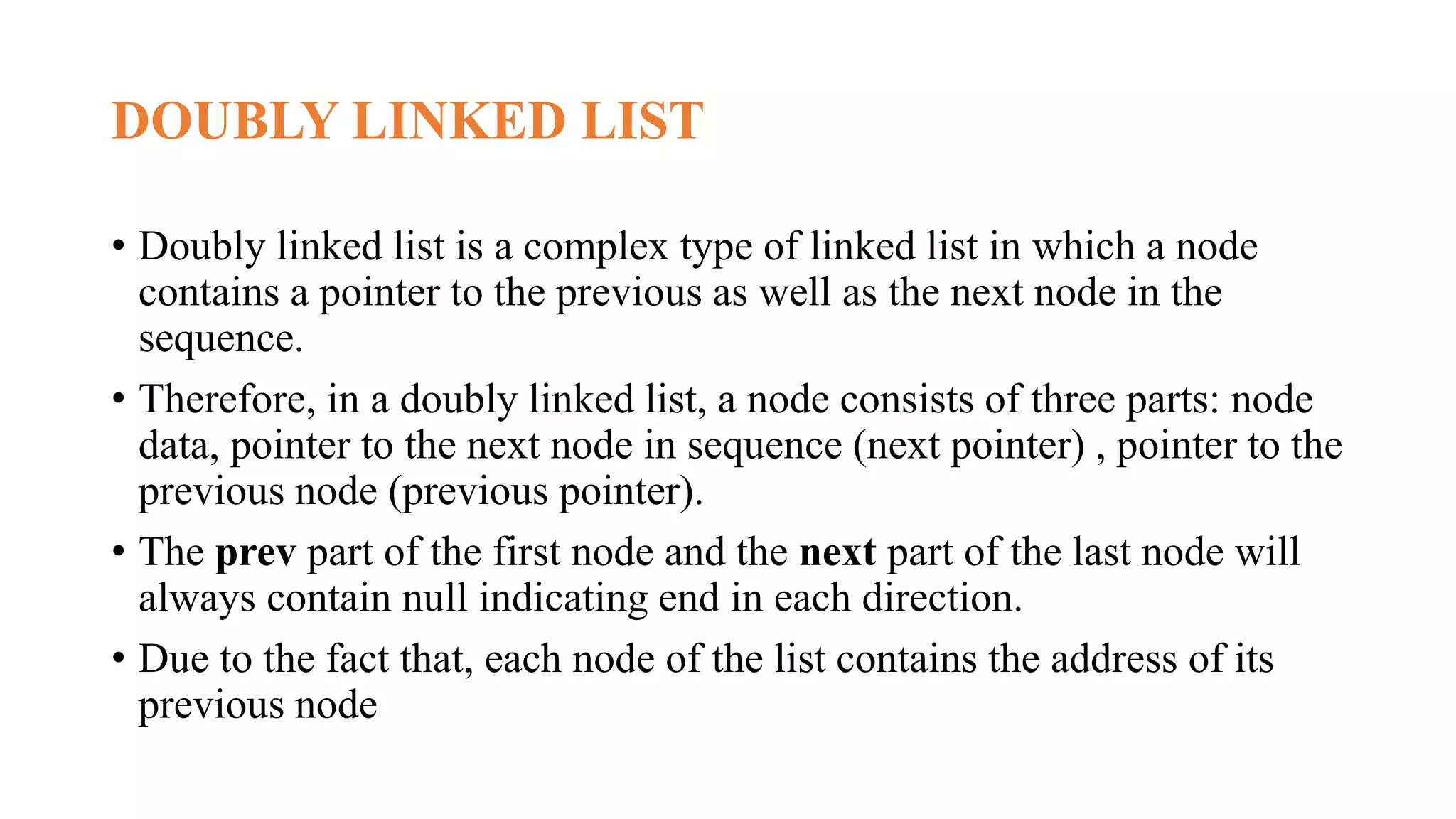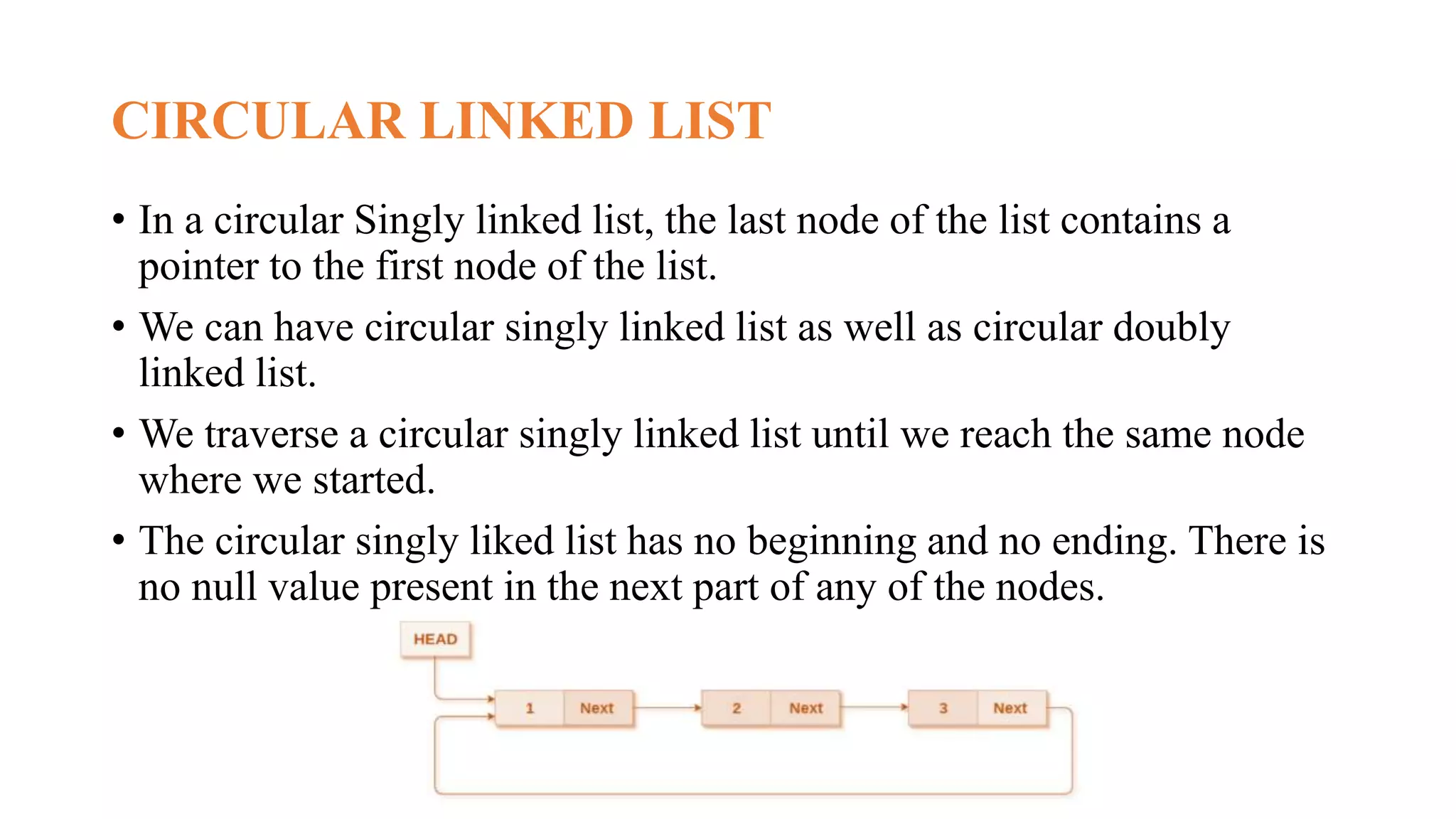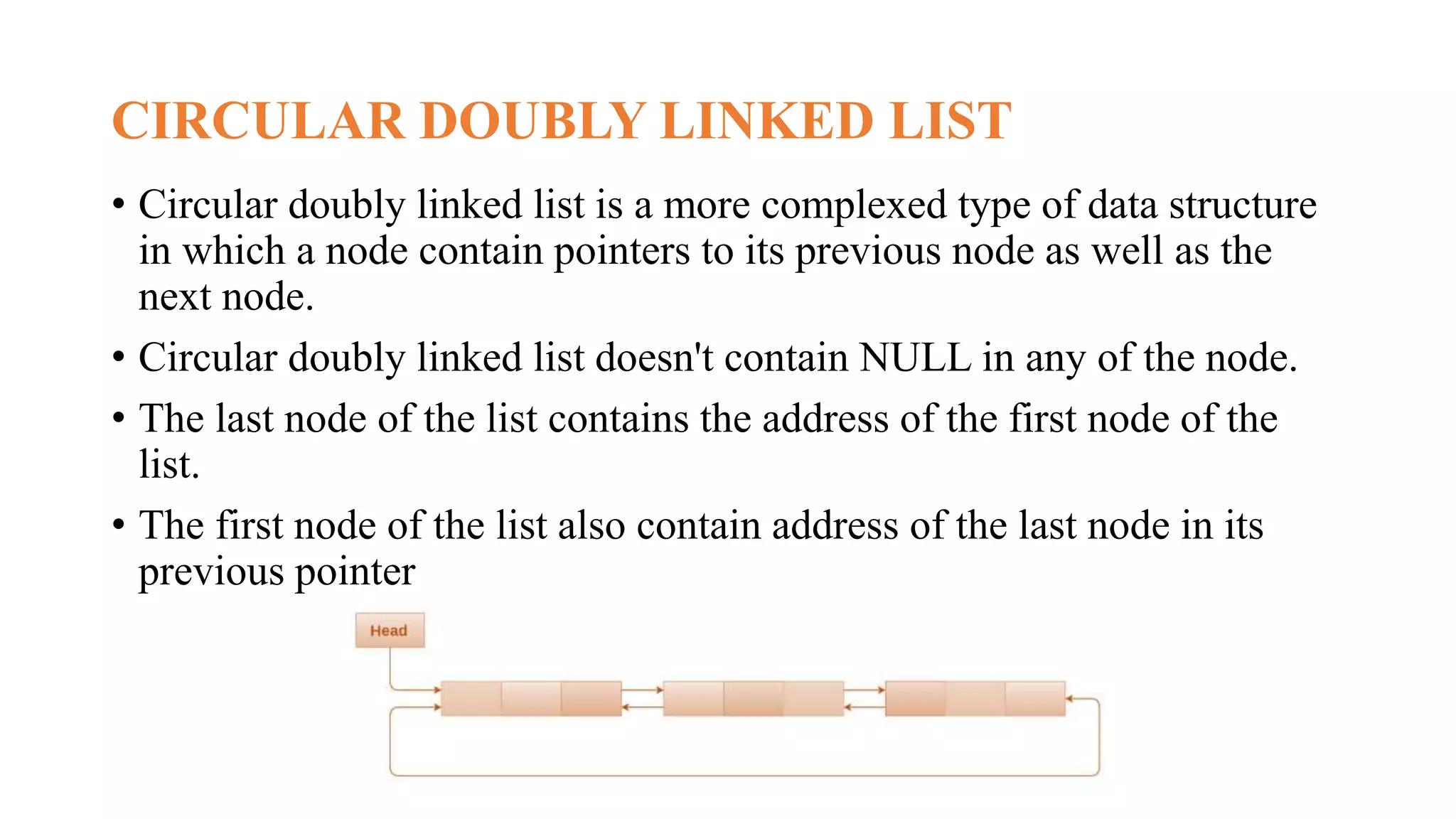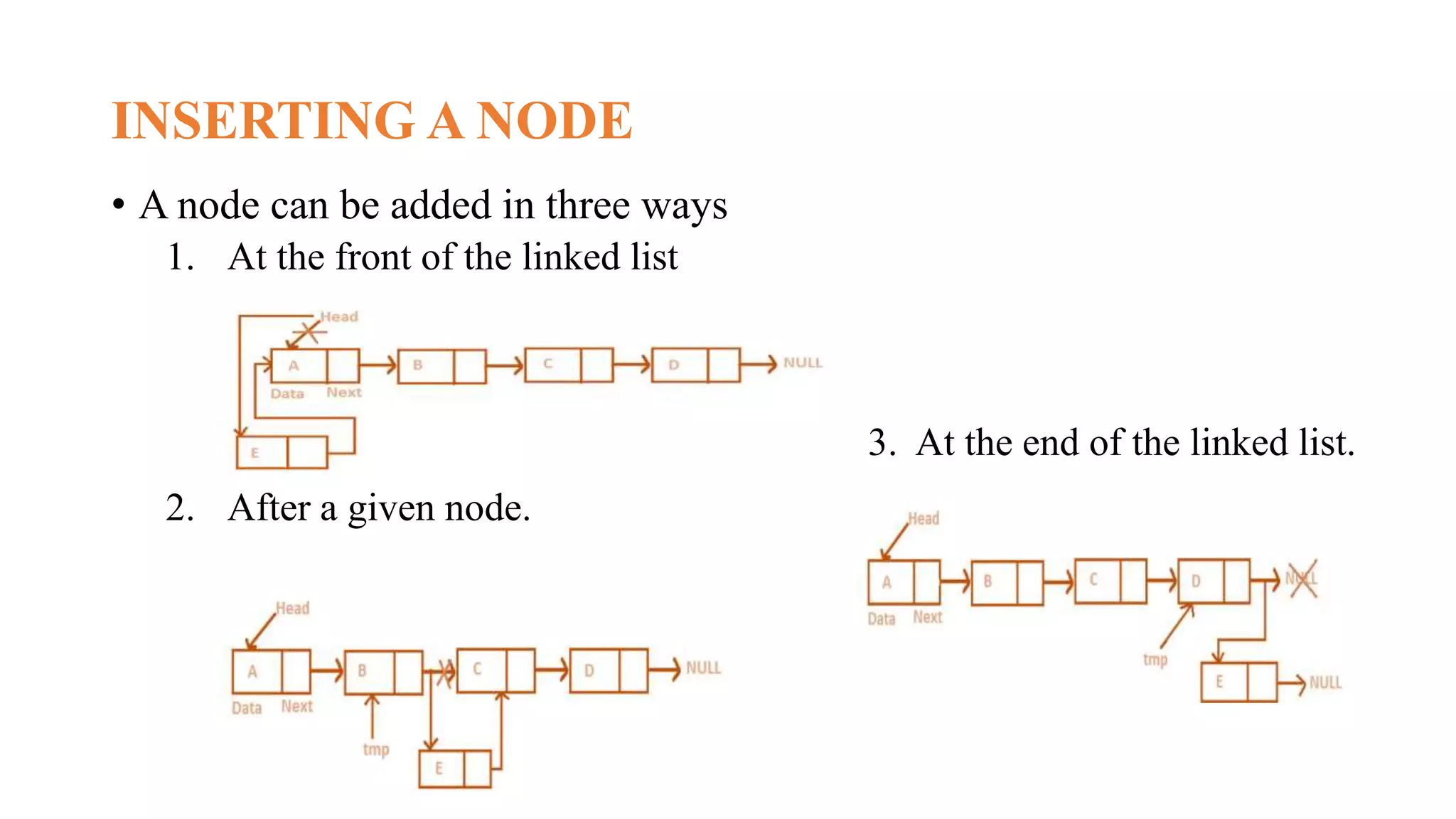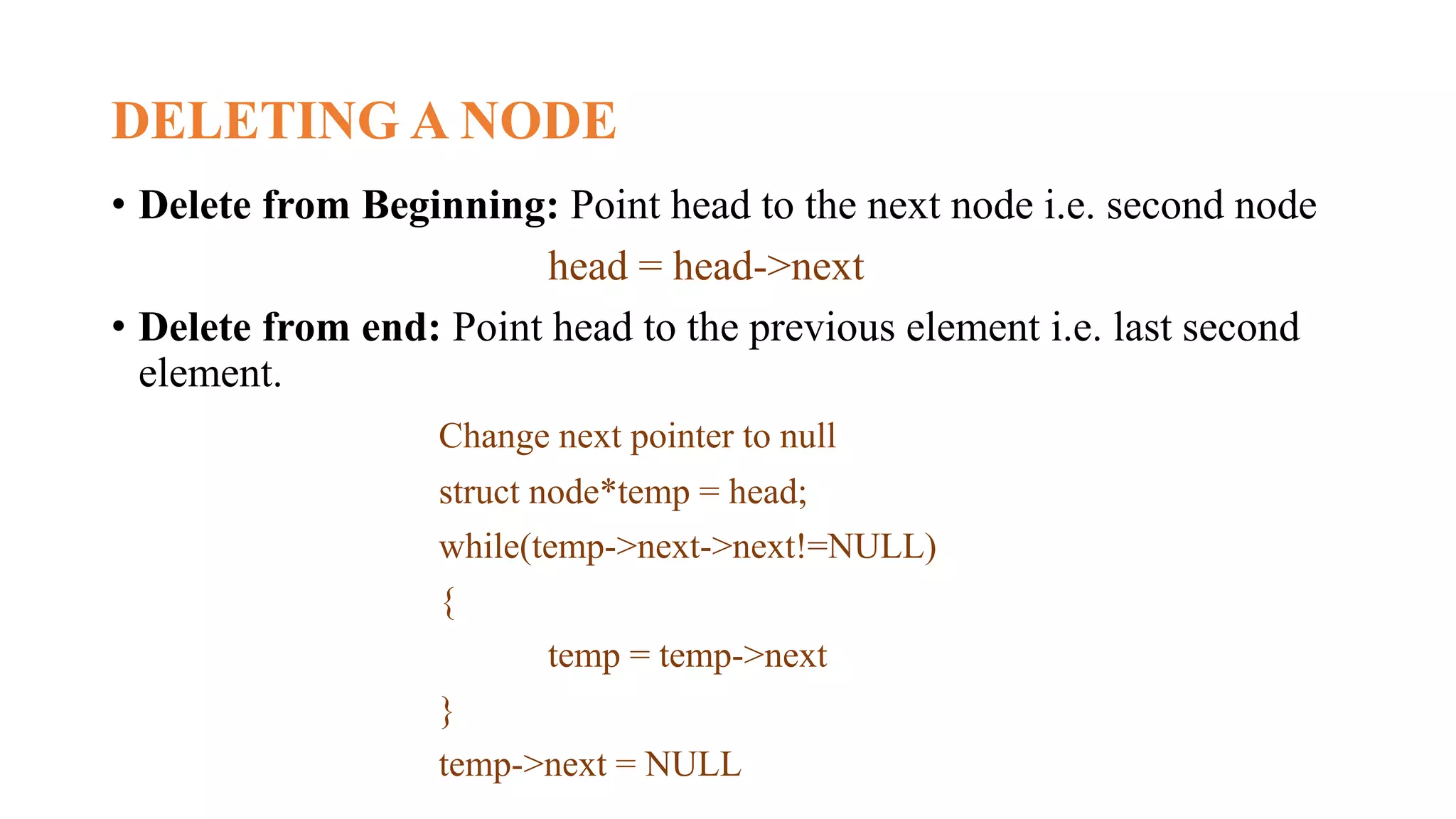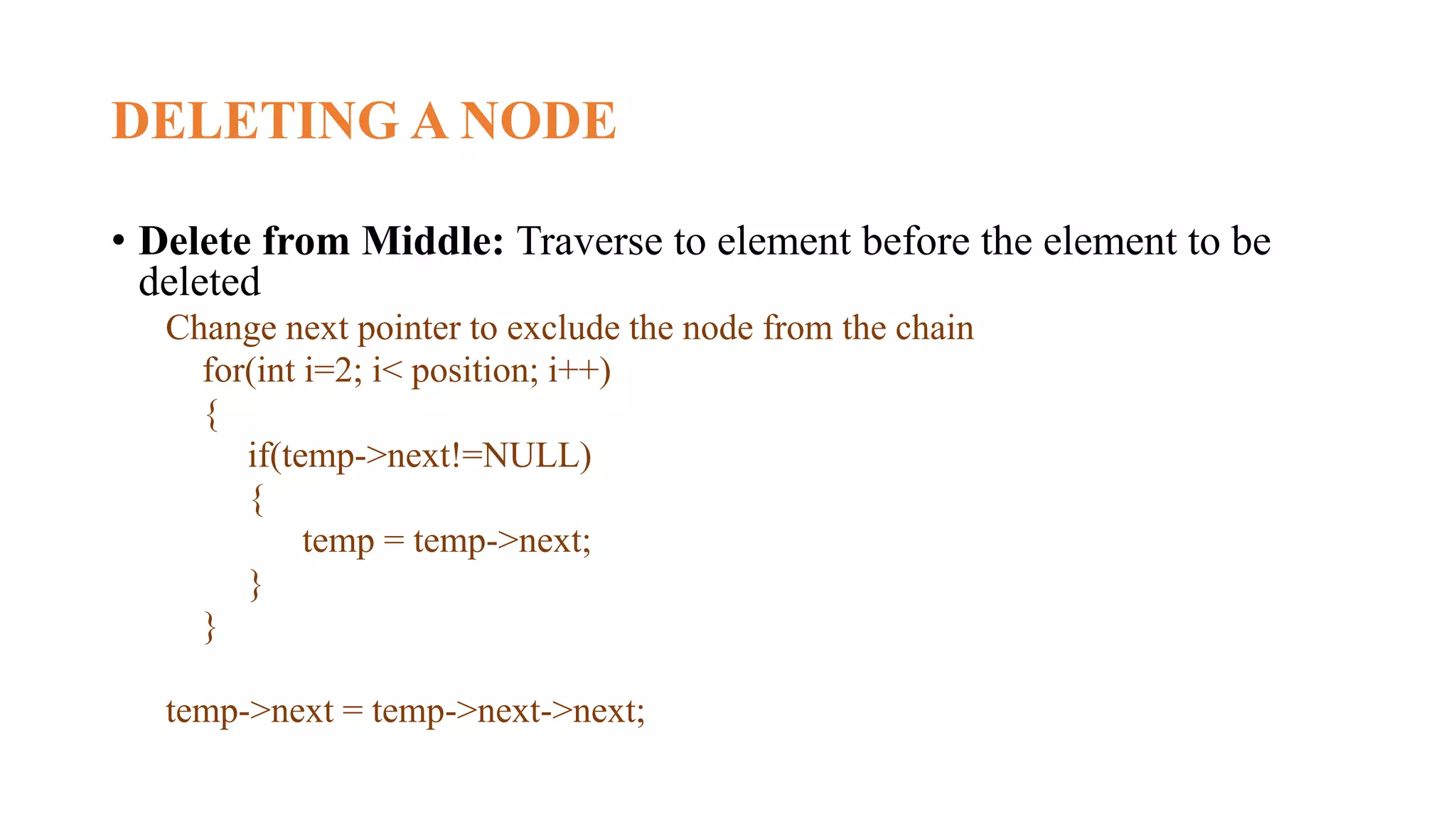1. Linked lists are linear data structures where elements are linked using pointers rather than stored contiguously in memory like arrays. Each element contains a data field and a pointer to the next node. 2. There are several types of linked lists including singly linked, doubly linked, circular linked lists. Singly linked lists have a single pointer, doubly linked lists have pointers to the next and previous nodes, and circular lists have the last node point to the first. 3. Common operations on linked lists include inserting and deleting nodes from the beginning, middle, or end as well as traversing the list.
